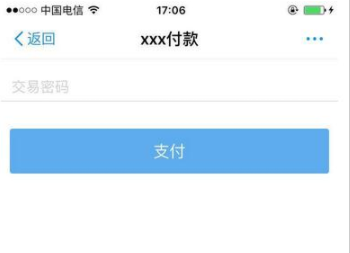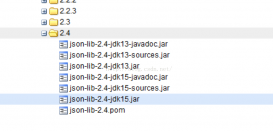方法1: 用java生成证书,不建议,移植性差。
方法2: 将RestTemplate改为https请求。
1、添加HttpsClientRequestFactory工具类
|
1
2
3
4
5
6
7
8
9
10
11
12
13
14
15
16
17
18
19
20
21
22
23
24
25
26
27
28
29
30
31
32
33
34
35
36
37
38
39
40
41
42
43
44
45
46
47
48
49
50
51
52
53
54
55
56
57
58
59
60
61
62
63
64
65
66
67
68
69
70
71
72
73
74
75
76
77
78
79
80
81
82
83
84
85
86
87
88
89
90
91
92
93
94
95
96
97
98
99
100
101
102
103
104
105
106
107
108
109
110
111
112
113
114
115
116
117
118
119
120
121
122
123
124
|
import org.springframework.http.client.SimpleClientHttpRequestFactory;import javax.net.ssl.*;import java.io.IOException;import java.net.HttpURLConnection;import java.net.InetAddress;import java.net.Socket;import java.security.cert.X509Certificate; /** * TLS的三个作用: * (1)身份认证 * 通过证书认证来确认对方的身份,防止中间人攻击 * (2)数据私密性 * 使用对称性密钥加密传输的数据,由于密钥只有客户端/服务端有,其他人无法窥探。 * (3)数据完整性 * 使用摘要算法对报文进行计算,收到消息后校验该值防止数据被篡改或丢失。 * * 使用RestTemplate进行HTTPS请求访问: * private static RestTemplate restTemplate = new RestTemplate(new HttpsClientRequestFactory()); * */public class HttpsClientRequestFactory extends SimpleClientHttpRequestFactory { @Override protected void prepareConnection(HttpURLConnection connection, String httpMethod) { try { if (!(connection instanceof HttpsURLConnection)) { throw new RuntimeException("An instance of HttpsURLConnection is expected"); } HttpsURLConnection httpsConnection = (HttpsURLConnection) connection; TrustManager[] trustAllCerts = new TrustManager[]{ new X509TrustManager() { @Override public java.security.cert.X509Certificate[] getAcceptedIssuers() { return null; } @Override public void checkClientTrusted(X509Certificate[] certs, String authType) { } @Override public void checkServerTrusted(X509Certificate[] certs, String authType) { } } }; SSLContext sslContext = SSLContext.getInstance("TLS"); sslContext.init(null, trustAllCerts, new java.security.SecureRandom()); httpsConnection.setSSLSocketFactory(new MyCustomSSLSocketFactory(sslContext.getSocketFactory())); httpsConnection.setHostnameVerifier(new HostnameVerifier() { @Override public boolean verify(String s, SSLSession sslSession) { return true; } }); super.prepareConnection(httpsConnection, httpMethod); } catch (Exception e) { e.printStackTrace(); } } private static class MyCustomSSLSocketFactory extends SSLSocketFactory { private final SSLSocketFactory delegate; public MyCustomSSLSocketFactory(SSLSocketFactory delegate) { this.delegate = delegate; } // 返回默认启用的密码套件。除非一个列表启用,对SSL连接的握手会使用这些密码套件。 // 这些默认的服务的最低质量要求保密保护和服务器身份验证 @Override public String[] getDefaultCipherSuites() { return delegate.getDefaultCipherSuites(); } // 返回的密码套件可用于SSL连接启用的名字 @Override public String[] getSupportedCipherSuites() { return delegate.getSupportedCipherSuites(); } @Override public Socket createSocket(final Socket socket, final String host, final int port, final boolean autoClose) throws IOException { final Socket underlyingSocket = delegate.createSocket(socket, host, port, autoClose); return overrideProtocol(underlyingSocket); } @Override public Socket createSocket(final String host, final int port) throws IOException { final Socket underlyingSocket = delegate.createSocket(host, port); return overrideProtocol(underlyingSocket); } @Override public Socket createSocket(final String host, final int port, final InetAddress localAddress, final int localPort) throws IOException { final Socket underlyingSocket = delegate.createSocket(host, port, localAddress, localPort); return overrideProtocol(underlyingSocket); } @Override public Socket createSocket(final InetAddress host, final int port) throws IOException { final Socket underlyingSocket = delegate.createSocket(host, port); return overrideProtocol(underlyingSocket); } @Override public Socket createSocket(final InetAddress host, final int port, final InetAddress localAddress, final int localPort) throws IOException { final Socket underlyingSocket = delegate.createSocket(host, port, localAddress, localPort); return overrideProtocol(underlyingSocket); } private Socket overrideProtocol(final Socket socket) { if (!(socket instanceof SSLSocket)) { throw new RuntimeException("An instance of SSLSocket is expected"); } //((SSLSocket) socket).setEnabledProtocols(new String[]{"TLSv1.2"}); ((SSLSocket) socket).setEnabledProtocols(new String[]{"TLSv1", "TLSv1.1", "TLSv1.2"}); return socket; } }} |
注意:服务端TLS版本要和客户端工具类中定义的一致。(TLSv1.2)
2、修改RestTemplate
在使用的时候,将
|
1
|
private static RestTemplate restTemplate = new RestTemplate(); |
改为:
|
1
|
private static RestTemplate restTemplate = new RestTemplate(new HttpsClientRequestFactory()); |
其他代码不变。
也可使用注入的方式:
|
1
2
3
4
5
6
7
|
@Configurationpublic class ConfigBean { @Bean public RestTemplate getRestTemplate() { return new RestTemplate(new HttpsClientRequestFactory()); }} |
3、访问https,抛出的异常
javax.net.ssl.SSLHandshakeException: Received fatal alert: handshake_failure解决方案
因为jdk中jce的安全机制导致报的错,需要去oracle官网下载对应的jce包替换jdk中的jce包。
方案一:替换jce包
|
1
2
3
4
5
6
7
|
目录 %JAVA_HOME%\jre\lib\security里的local_policy.jar,US_export_policy.jarJDK7 http://www.oracle.com/technetwork/java/javase/downloads/jce-7-download-432124.htmlJDK8 http://www.oracle.com/technetwork/java/javase/downloads/jce8-download-2133166.html // pub1:/home/myron/jdk1.7.0_80 % cd $JAVA_HOME/jre/lib/security/ //jce所在jdk的路径US_export_policy.jarlocal_policy.jar |
方案二:升级 JDK到1.8版本(推荐方式)
|
1
2
3
4
5
|
// pub1:/home/myron % vi .cshrcsetenv JAVA_HOME /home/myron/jdk1.8.0_211// pub1:/home/myron % source .cshrc// pub1:/home/myron % java -versionjava version "1.8.0_211" |
以上为个人经验,希望能给大家一个参考,也希望大家多多支持服务器之家。
原文链接:https://blog.csdn.net/MyronCham/article/details/103481046

















